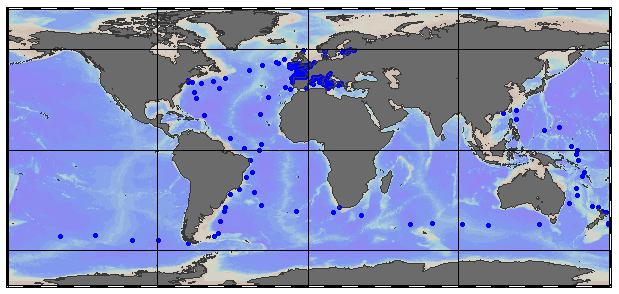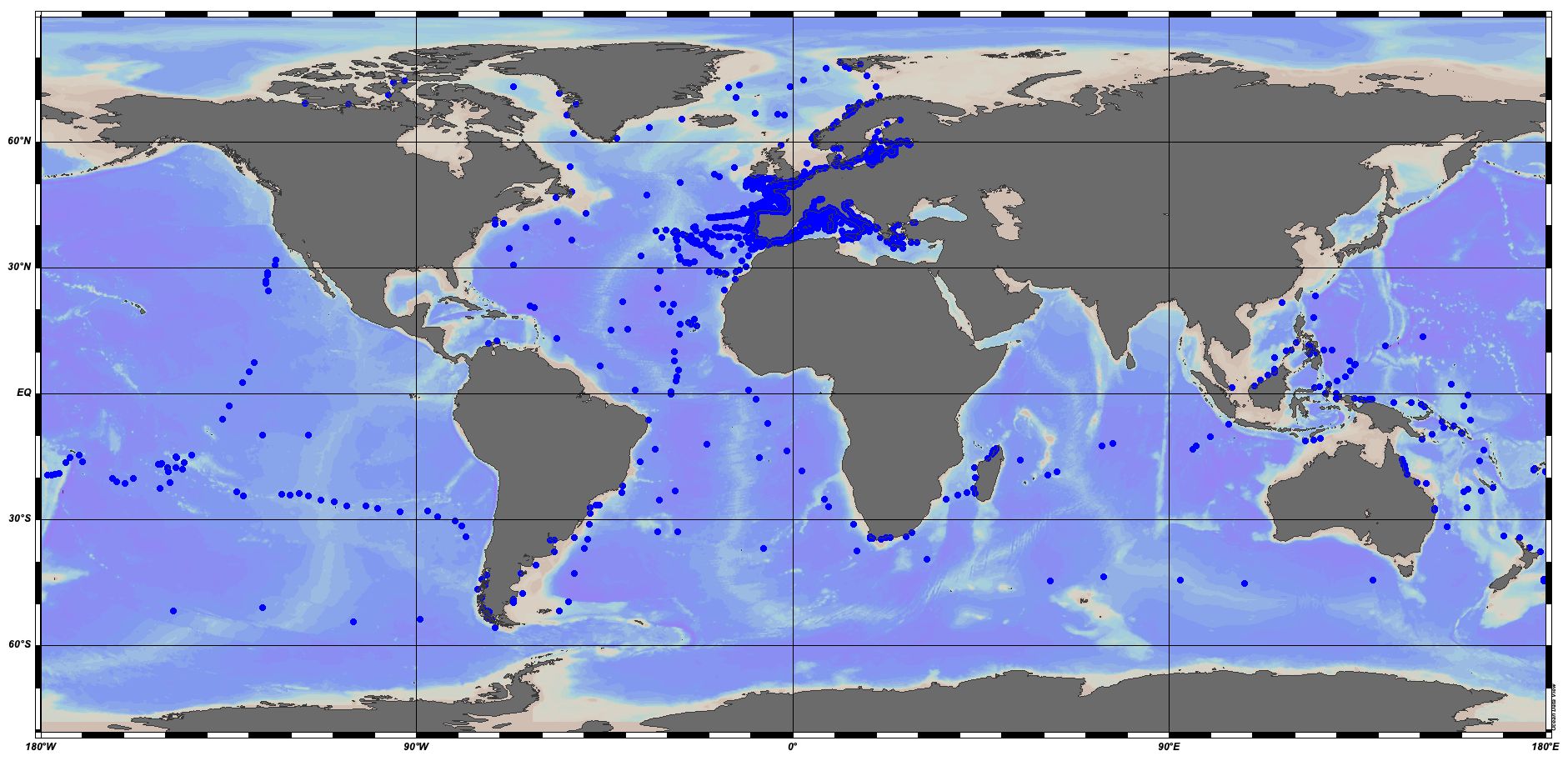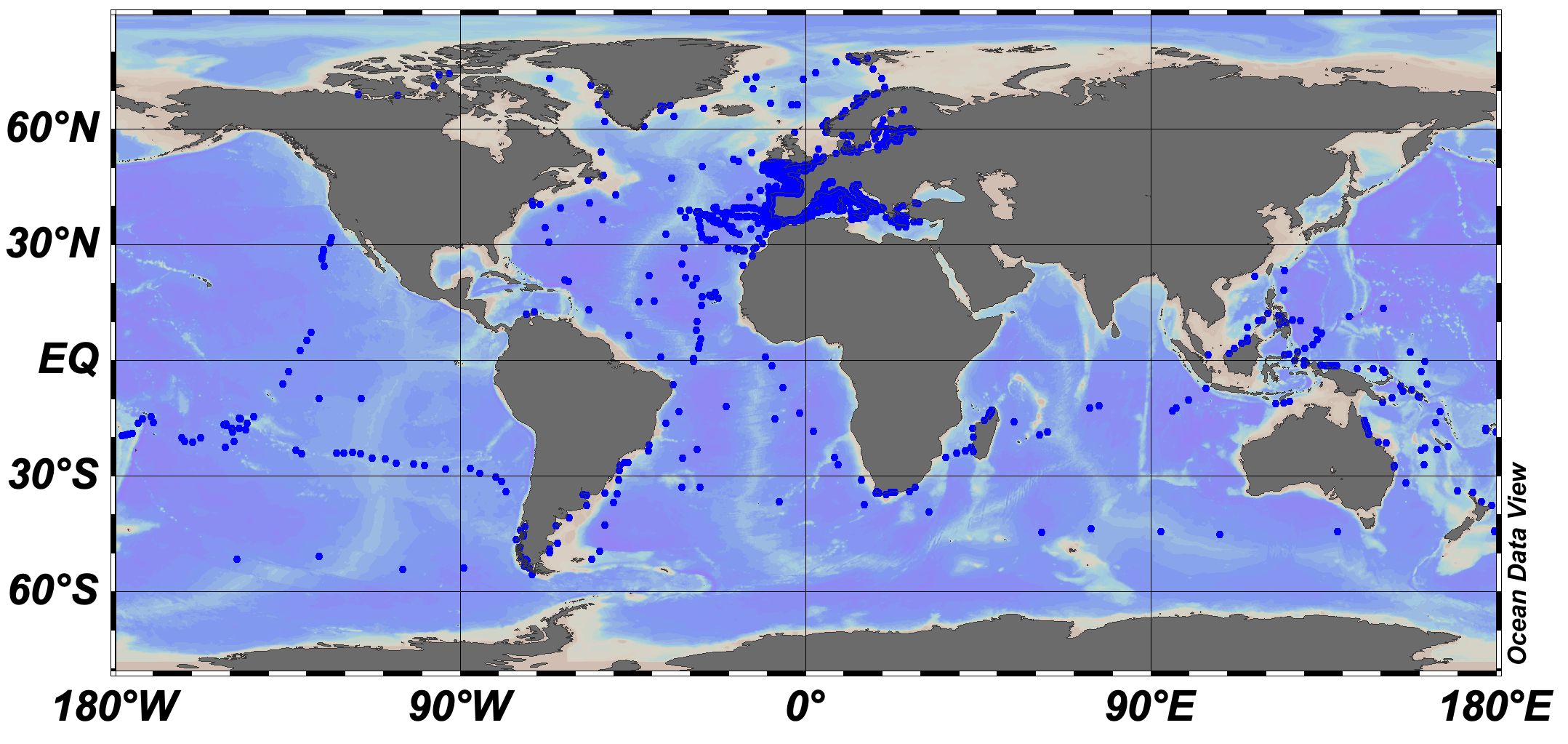IFREMER, FISHERIES SCIENCE AND TECHNOLOGY, PLOUZANE
Type of resources
Available actions
Topics
Keywords
Contact for the resource
Provided by
Years
Formats
Representation types
-

EMODnet Chemistry aims to provide access to marine chemistry data sets and derived data products concerning eutrophication, ocean acidification, contaminants and litter. The chosen parameters are relevant for the Marine Strategy Framework Directive (MSFD), in particular for descriptors 5, 8, 9 and 10. These datasets contain standardized, harmonized and validated data collections of floating micro-litter. For floating micro-litter, the harmonized datasets contain all unrestricted EMODnet Chemistry data on floating micro-litter data, including 907 CDI records. The temporal range covered is from 2011-06-14 to 2020-12-02. Data was harmonized by ‘Istituto Nazionale di Oceanografia e di Geofisica Sperimentale, Division of Oceanography (OGS/NODC)’ from Italy. Data is formatted following Guidelines and formats for gathering and management of micro-litter data sets on a European scale (floating and sediment micro-litter), which can be found at: https://doi.org/10.6092/d3e239ec-f790-4ee4-9bb4-c32ef39b426d. Parameter names in these datasets are based on P01, BODC Parameter Usage Vocabulary, which is available at: https://vocab.seadatanet.org/p01-facet-search. Each measurement value has a quality flag indicator. The resulting data collections are harmonized, using ODV Software and following a common methodology for all Sea Regions. Harmonization means that: (1) unit conversion is carried out to express variables with a limited set of measurement units and (2) merging of variables described by different “local names”, but corresponding exactly to the same concepts in BODC P01 vocabulary. The harmonized dataset can be downloaded as ODV collection and spreadsheet (TXT file), which is composed of a metadata header followed by tab separated values. Both formats can be opened with ODV Software for visualization (More information can be found at: https://www.seadatanet.org/Software/ODV ). The original datasets can be searched and downloaded from EMODnet Chemistry Chemistry CDI Data and Discovery Access Service: https://emodnet-chemistry.maris.nl/search
-

EMODnet Chemistry aims to provide access to marine chemistry data sets and derived data products concerning eutrophication, ocean acidification, contaminants and litter. The chosen parameters are relevant for the Marine Strategy Framework Directive (MSFD), in particular for descriptors 5, 8, 9 and 10. These datasets contain standardized, harmonized and validated data collections of floating micro-litter. For floating micro-litter, the harmonized datasets contain all unrestricted EMODnet Chemistry data on floating micro-litter data. Data was harmonized by ‘Istituto Nazionale di Oceanografia e di Geofisica Sperimentale, Division of Oceanography (OGS/NODC)’ from Italy. Data is formatted following Guidelines and formats for gathering and management of micro-litter data sets on a European scale (floating and sediment micro-litter), which can be found at: https://doi.org/10.6092/d3e239ec-f790-4ee4-9bb4-c32ef39b426d. Parameter names in these datasets are based on P01, Parameter Usage Vocabulary, which is available at: https://vocab.seadatanet.org/p01-facet-search. Each measurement value has a quality flag indicator. The resulting data collections are harmonized, using ODV Software and following a common methodology for all Sea Regions. Harmonization means that: (1) unit conversion is carried out to express variables with a limited set of measurement units and (2) merging of variables described by different “local names”, but corresponding exactly to the same concepts in BODC P01 vocabulary. The harmonized dataset can be downloaded as ODV collection that can be opened with ODV software for visualization (More information can be found at: https://www.seadatanet.org/Software/ODV). The same dataset is offered as spreadsheet (txt format, tab separated values) where the values of the categories for the following reported parameters (type, shape, size, color, transparency and material) have been uniformed as labelled in the SeaDataNet H01, H02, H03, H04, H05, H06 vocabularies (https://vocab.seadatanet.org/search). This format is more adapted to worksheet applications (e.g. LibreOffice Calc).
-

EMODnet Chemistry aims to provide access to marine chemistry datasets and derived data products concerning eutrophication, acidity, contaminants and marine litter. The importance of the selected substances and other parameters relates to the Marine Strategy Framework Directive (MSFD). This aggregated dataset contains all unrestricted EMODnet Chemistry data on floating micro-litter. This dataset is the result of a validation and harmonisation process of the datasets concerning floating micro-litter present in EMODnet Chemistry. The datasets concerning micro-litter are automatically harvested and the resulting collections are harmonised and validated using ODV Software and following a common methodology for all sea regions. Parameter names are based on P01 vocabulary, which relates to BODC Parameter Usage Vocabulary and is available at: https://vocab.nerc.ac.uk/search_nvs/P01/ This process was performed by ‘Istituto Nazionale di Oceanografia e di Geofisica Sperimentale, Division of Oceanography (OGS/NODC)’ from Italy. Harmonisation means that: (1) unit conversion is carried out to express variables with a limited set of measurement units and (2) merging of variables described by different “local names”, but corresponding exactly to the same concepts in BODC P01 vocabulary. The harmonised dataset can be downloaded as ODV collection that can be opened with ODV software for visualization (More information can be found at: https://www.seadatanet.org/Software/ODV ). The same dataset is offered as spreadsheet (txt format, tab separated values) where the values of the categories for the following reported parameters (type, shape, size, color, transparency and material) have been uniformed as labelled in the SeaDataNet H01, H02, H03, H04, H05, H06 vocabularies (https://vocab.seadatanet.org/search ). This format is more adapted to worksheet applications (e.g. LibreOffice Calc).
 Catalogue PIGMA
Catalogue PIGMA